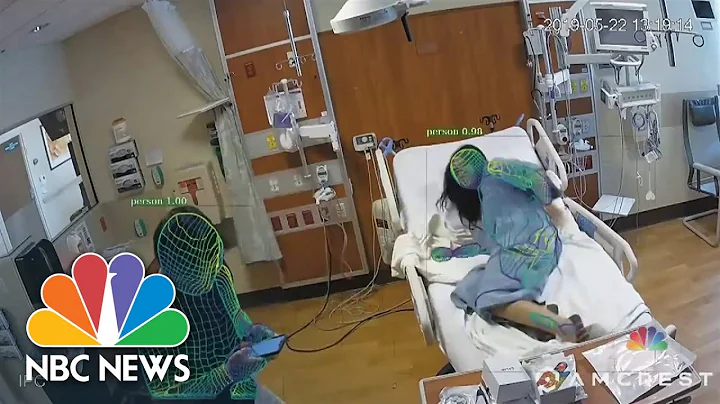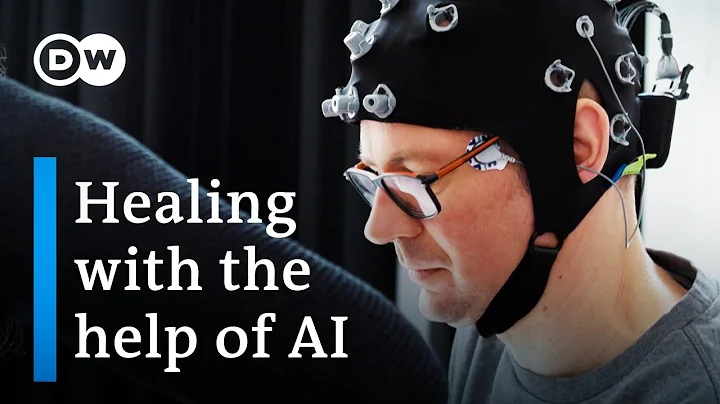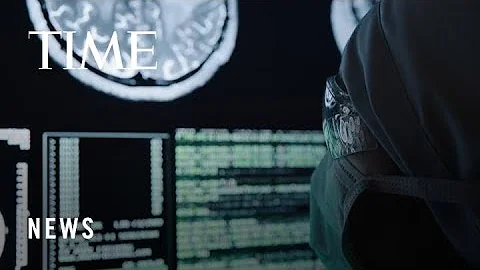
In the past two years, medical AI companies, large and small, have emerged one after another. However, when Aier Ophthalmology launched the remote intelligent reading platform - "Mulin", many people were still surprised. Aier Eye Hospital seems to be the first domestic hospital to lead the development of AI products as a traditional hospital.
As the leader of the "Multiple Neighbors" project, fundus disease expert Professor Tang Shibo is also a special being. Chief physician, second-level professor, doctoral supervisor, winner of the National Outstanding Youth Fund, winner of the State Council Special Allowance, winner of the German Humboldt Fund, young and middle-aged expert with outstanding contributions to the Ministry of Health, national subject leader of the Thousand Hundred Ten Project, An advanced worker in moral education at the Ministry of Health, a member of the American Society of Retina Specialists... He has too many honors and labels.
Tang Shibo once served as deputy director of Zhongshan Eye Center and deputy director of the Eye Hospital. He is a division-level cadre. In 2013, he felt that his life could be seen to the end at a glance. He hoped that the trajectory of his life could be changed and create more possibilities, so he resigned and walked out of the system.
In fact, as early as August 2012, Professor Tang Shibo had already joined AIER Ophthalmology. In 2013, Aier Ophthalmology and Central South University jointly established my country's first professional ophthalmology college. Tang Shibo officially served as the dean of Aier Ophthalmology College of Central South University, and concurrently served as the general dean of Aier Ophthalmology Group.
For the fundus AI platform “Mulin”, AIER Ophthalmology is both a developer and a user. As the leader of the "Mu Neighbor" project, Professor Tang Shibo has the triple identity of doctor, teacher and hospital administrator. Through these different identities and perspectives, what different views does Professor Tang Shibo have on medical AI? With these questions, Lei Feng.com conducted an exclusive interview with him at Shenzhen Aier Eye Hospital. The accuracy of
has steadily increased.
Aier Ophthalmology’s layout in the field of artificial intelligence and began in January 2016. Its two invested companies, Jishi Internet and Jinhong Technology, are responsible for specific product development. Among them, Jishi Internet is responsible for developing and operating the film reading platform, Jinhong Technology provides fundus camera equipment production and artificial intelligence models, and Aier Ophthalmology provides fundus photos for the platform for learning through hundreds of hospitals across the country.
AIER Ophthalmology is not too early to deploy fundus AI. Start-ups Airdoc and Bigvision, which also focus on fundus AI, were established in 2015. But Aier Ophthalmology has the confidence that the latter two do not have, that is, it has a large amount of ophthalmology data.
AIER Ophthalmology Artificial Intelligence Reading Platform System was initially developed from DR (diabetic retinopathy). From January 2016 to August of that year, the system learned more than 50,000 fundus photos. After learning and model adjustment, it became accurate The rate reached 82%.
Subsequently, the system began to identify AMD (age-related macular degeneration), and further studied more than 40,000 fundus photos, and the DR diagnosis accuracy reached 93.3%.
In July 2017, Aier Ophthalmology announced a cooperation with Intel . Talking about this cooperation, Professor Tang Shibo said, "When the accuracy of increases to a certain level, every 1% improvement is very difficult. It not only tests the design and spirituality of algorithm engineers, but also requires extremely high amounts of learning data. "The addition of
Intel will provide customized hardware solutions based on the existing artificial intelligence recognition results of AIER Ophthalmology, combined with the characteristics of ophthalmic image analysis and processing, from the perspective of processor and related hardware optimization, further Improve the accuracy and efficiency of DR and AMD screening, and gradually expand to the diagnosis of other eye diseases such as glaucoma in the future.
Professor Tang Shibo said that the current DR recognition accuracy rate of "Mulin" has exceeded 95%. The most important thing about
is to benefit the public
For a long time, accuracy has been a concern and criticism of medical AI. Because if 1 million people use this product, based on an accuracy rate of 95%, 50,000 people may be misdiagnosed. False positives are acceptable, after all, there are doctors to check, but false negatives may threaten the patient's life and health, which is why many doctors are not optimistic about medical AI.
Professor Tang Shibo believes that this issue should be looked at from two sides.First of all, China's medical resources are extremely uneven, and this situation is difficult to reverse for a while. Big cities such as Beijing, Shanghai, Guangzhou and Shenzhen have very high-quality medical resources, but there is a shortage of professional ophthalmologists at the grassroots level and in rural areas. DR is a high-risk disease. According to rough statistics, there are more than 27 million DR patients in my country. Although local health departments are willing and have organized many community screening activities, they have not achieved the expected results due to manpower shortages.
When a reporter from Lei Feng Network met Professor Tang Shibo at Shenzhen Aier Eye Hospital, he was patiently treating patients in the clinic. Professor Tang said frankly that there is currently a shortage of personnel in Aier Ophthalmology Department. "We are committed to cultivating a large number of medical auxiliary personnel to help with patient education and patient screening."
He believes that under this background, even if fundus AI is used An accuracy rate of only 90% is acceptable. If it is put into grassroots communities and rural areas, it can help patients detect the disease and treat it early, which is beneficial to the group. "With , we should first consider benefiting the masses, rather than pursuing high-end at a certain point."
Of course, from an individual point of view, this accuracy is not enough and needs to be continuously improved to approach 100% infinitely.
In fact, even the best doctors cannot guarantee that the diagnosis is 100% accurate. The difference between doctors and AI is that doctors need to take responsibility if they make mistakes. Who will be responsible if AI makes mistakes?
Professor Tang believes that as AI technology gradually develops and matures, the country will naturally introduce relevant policies and standards to regulate it. The development of anything requires a process. Only by allowing medical AI to develop first can be able to sort out the best and eliminate the fittest to produce truly excellent products. is just that medical AI is different from general commodities after all. It is related to the lives and health of the public, and the country cannot completely liberalize it. How to grasp the scale of collection and release in is a great test of the wisdom of managers.
Serving the Group’s Strategy
Professor Tang introduced that so far “Mulin” has been implemented in more than 20 community health centers in Tianjin, Changsha and Shenzhen. Aier Eye Clinic sent professional staff to these community health centers for training. Medical workers at community health centers collect fundus photos and upload them to the "Mulin" system, and the results are available in just a few seconds. The results given by
"Mu Neighbor" include a probability value. If the probability value is above 60% or 70%, it means that the probability of suffering from DR is relatively high. Medical workers at community health centers will recommend patients to go to a professional eye hospital for further examination.
"The fundus lesions are complex and diverse. Patients with a probability value of less than 50% may also have some eye lesions, but they are not necessarily DR. If the probability value is less than 20%, it means that there is definitely no problem with the eyes." Professor Tang explained to Lei Feng.com.
is different from other fundus AI companies, AIr Ophthalmology does not need to worry about the commercialization of “Multiple Eyes” because AIr Eyes Medical itself is a user of “Multiple Eyes”.
In the short term, DR patients screened by "Mu Neighbor" in grassroots communities can be transferred to the nearby Aier Eye Hospital for treatment, directly bringing customer flow to the latter.
Currently, Aier Ophthalmology has more than 200 hospitals across the country, of which more than 70 are part of the listed company system. At the shareholders' meeting in April last year, Aier Ophthalmology stated that it would deploy 1,000 county-level hospitals by 2020. However, there is a serious shortage of professional ophthalmologists in China (a 2012 statistics showed that there were only 31,400 ophthalmologists), and the training of ophthalmologists cannot be achieved overnight. It is foreseeable that the expansion of Aier Ophthalmology will soon encounter a personnel bottleneck.
Professor Tang Shibo believes that although AI cannot yet replace doctors, it has self-learning capabilities and can integrate the experience of countless best experts; in the future, it will replace some doctors in township hospitals and county-level hospitals, or share part of the pre-examination and postoperative review The job is not impossible. It is not even ruled out that AI will eventually be better than human experts. In the future, patients who seek medical treatment from AI will have to pay "expert fees."
Professor Tang Shibo currently serves as the group vice president of Aier Ophthalmology. As a hospital manager, it is undoubtedly necessary to deploy AI from the perspective of the long-term development of the group.
Treating the symptoms can also cure the root cause
"No matter how smart the AI is, it cannot replace the warmth of human doctors." This is a reason often mentioned by doctors when they look down on medical AI. There is no doubt that for a long time to come, AI will only serve as a doctor’s assistant. The problem of shortage of excellent doctors still exists objectively. To solve this problem, we must start from the source-education.
In addition to treating patients on the front line and managing group affairs, Professor Tang Shibo is also engaged in teaching. He believes that what China lacks is not only excellent medical workers, but also excellent medical teaching workers.
The medical school still adopts the model of one tutor leading several master's/doctoral students, and the efficiency of knowledge dissemination is limited. If an AI system can be developed for medical teaching so that each student can receive one-on-one personalized teaching, it will definitely be of great help to alleviate the shortage of medical staff.
In addition, medical student internship is also a big problem. After all, what students learn in school is theoretical knowledge, and they must gain practical experience through clinical internships. However, patients often reject interns and worry that their skills are not enough. In this way, a dead situation is formed. Professor Tang believes that it would be of great significance to develop an internship system by combining advanced technologies such as AI and AR to help students shorten their internship period.













![[English Subtitles] Where Are We Going, Dad? Episode 2 - DayDayNews](https://i.ytimg.com/vi/jbP7ii08Aj8/hqdefault.jpg?sqp=-oaymwEcCOADEI4CSFXyq4qpAw4IARUAAIhCGAFwAcABBg==&rs=AOn4CLA_DR4XJ4Drytio-s1Nzos3CGAEUw)

![[English Subtitles] Where Are We Going? Dad - Episode 1 - DayDayNews](https://i.ytimg.com/vi/0Rj5UrWm1OQ/hqdefault.jpg?sqp=-oaymwE2COADEI4CSFXyq4qpAygIARUAAIhCGAFwAcABBvABAfgB_gSAAugCigIMCAAQARhlIGAoVjAP&rs=AOn4CLD8WNvzhu65JBn2iuBHWKlR2owLjw)





